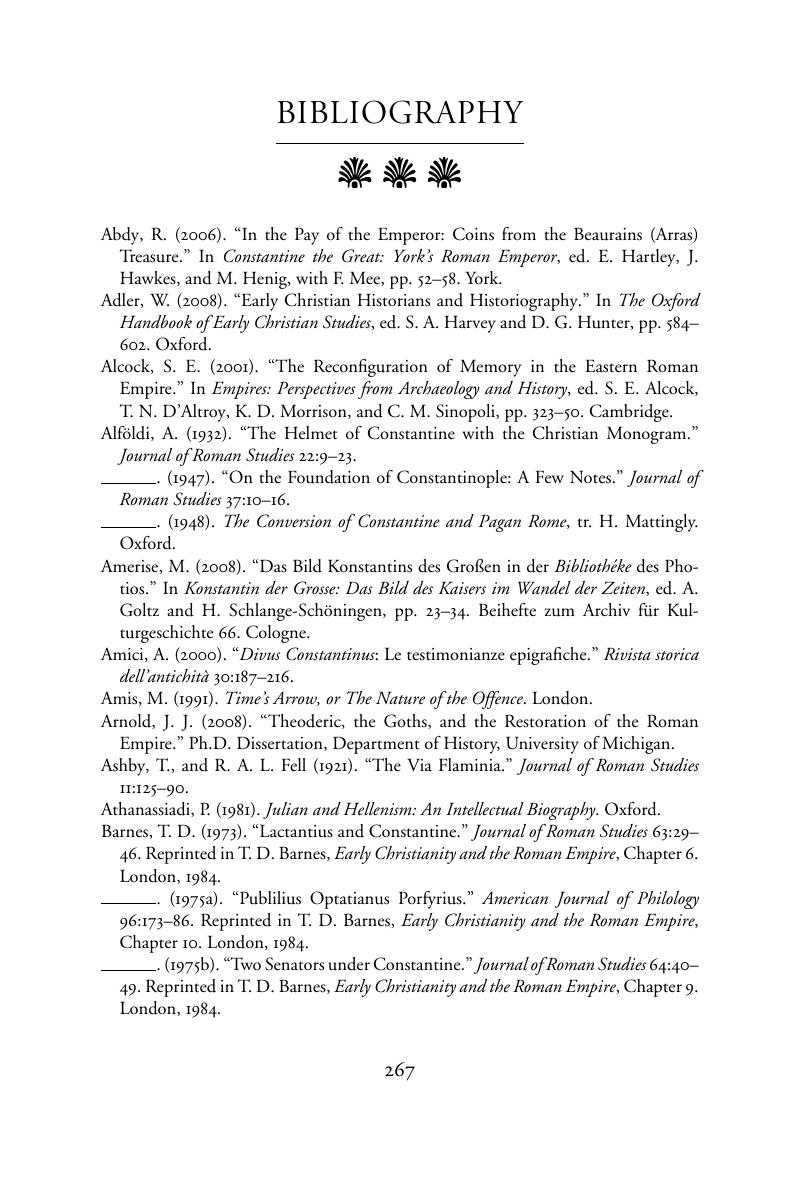Book contents
- Frontmatter
- Contents
- PREFACE
- ABBREVIATIONS
- TIMELINE
- Constantines Empire After 312
- 1 FOREWORD: VISIONS OF CONSTANTINE
- 2 THE AFTERLIFE OF CONSTANTINE
- 3 ECCLESIASTICAL HISTORIES
- 4 CONSTANTINE'S MEMORIES
- 5 EUSEBIUS' COMMENTARY
- 6 SHAPING MEMORIES IN THE WEST
- 7 ROME AFTER THE BATTLE
- 8 BACKWARD AND FORWARD
- 9 REMEMBERING MAXENTIUS
- 10 BACK WORD: THE BRIDGE
- EDITIONS AND TRANSLATIONS
- BIBLIOGRAPHY
- INDEX
- References
BIBLIOGRAPHY
Published online by Cambridge University Press: 03 May 2011
- Frontmatter
- Contents
- PREFACE
- ABBREVIATIONS
- TIMELINE
- Constantines Empire After 312
- 1 FOREWORD: VISIONS OF CONSTANTINE
- 2 THE AFTERLIFE OF CONSTANTINE
- 3 ECCLESIASTICAL HISTORIES
- 4 CONSTANTINE'S MEMORIES
- 5 EUSEBIUS' COMMENTARY
- 6 SHAPING MEMORIES IN THE WEST
- 7 ROME AFTER THE BATTLE
- 8 BACKWARD AND FORWARD
- 9 REMEMBERING MAXENTIUS
- 10 BACK WORD: THE BRIDGE
- EDITIONS AND TRANSLATIONS
- BIBLIOGRAPHY
- INDEX
- References
Summary

- Type
- Chapter
- Information
- Remembering Constantine at the Milvian Bridge , pp. 267 - 288Publisher: Cambridge University PressPrint publication year: 2011



